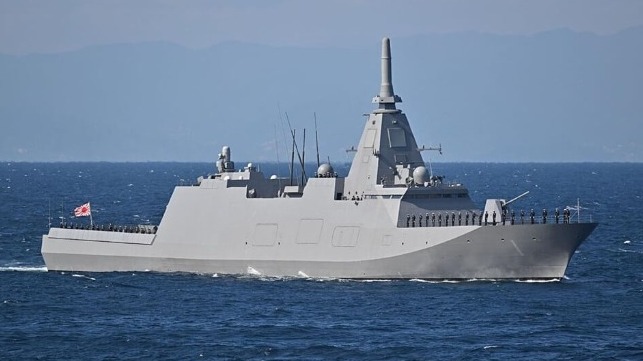Australia's Future Navy: The Japanese Option
Japan and Australia have similar security strategies, so why not the same ships?

[By Peter J. Dean]
By the end of this decade the Royal Australian Navy (RAN) may well by operating a frigate that originates from Japan.
Just saying this out loud before the launch of Independent Analysis of Navy’s Surface Combatant Fleet on 20 February would have led commentators and experts to either pass looks of derision or list all the reasons why it would never happen. The fact that this has received little attention is due to the bold approach outlined in the Analysis. For a decidedly short document (six pages, while full-page glossy photos get more than eight), it packs a punch and decisively reshapes the Navy.
The media coverage has been extensive, but most of the column inches have been devoted to the size and shape of the future surface fleet, the funding envelope, the Government’s management of the defence portfolio, and the fact that the surface fleet will shrink before it grows.
But the decision to shortlist a Japanese vessel for eleven new general-purpose frigates has so far been overlooked, yet it is significant both because of the specific ship and because of the potential strategic impact of a Japanese design.
From a strategic perspective, selection of the Japanese frigate would reinforce a closer alignment between the two countries. Japan's National Security Strategy and National Defence Strategy were launched in December 2022, not long before the Albanese Government received the Defence Strategic Review from Sir Angus Houston and Stephen Smith on Valentines Day 2023. Looked at side by side, these documents, developed independently, are strikingly similar.
Both emphasise the emerging multipolar order in the Indo-Pacific, both adopt a focus on deterrence by denial, long-range strike, integrated air and missile defence, maritime operations, national resilience and accelerated preparedness.
Most importantly, both have at their centre a regional balancing strategy built around US allies and partners. The Japanese strategy document goes so far as to say that Australia is the second most important partner for Japan, behind the US. The Australia-Japan relationship has progressed steadily over the last decade, culminating in January 2022 when the two countries signed a Reciprocal Access Agreement, which was upgraded in 2023.
On the downside, Japan does not have a strong record of defence exports. However, Japan has a long history of working with the US and, like Australia, the bulk of its equipment is US in origin. The Japanese have also entered the playing field of major international capability development programs with the Global Combat Air Program, partnering with the UK and Italy. Perhaps the next step in expanding the balancing coalition in the Indo-Pacific is through an Australia-Japan frigate program built around the Mogami class.
As for the ship itself, the Japanese Mogami-Class frigate should be one of the front runners among the four selected (with the other designs coming from Spain, Germany and South Korea). The Independent Analysis calls for a vessel that is already ‘in the water’, can be built rapidly with a hybrid offshore and onshore build, and meets a suite of requirements. The new vessels must:
- operate a helicopter.
- conduct anti-submarine warfare, including with a towed-array sonar and lightweight torpedoes.
- provide air defence.
- provide anti-ship and land strike capability.
- provide protection for a larger naval task force.
The Mogami class meets all these requirements but provides a couple of key additional attributes. This frigate is operated by a fellow US ally, is focused on the same geographical region as Australia, and is a mature design. The seventh vessel in the class was just launched and Japan is well on its way to building up to 22 Mogami frigates. Adding 11 RAN vessels to this class could yield economies of scale on maintenance, sustainment and future design enhancements.
One of the key features of the Japanese frigate is that it is designed to operate the MH-60 Seahawk helicopter. The RAN is committed to a fleet of these helicopters and the ability to operate it will be a critical requirement for the new frigate. The Mogami is also one of the fastest and most manoeuvrable ships of the four selected, and has the smallest crew requirement, a critical factor as the RAN faces a workforce crisis.
Finally, the Mogami-class has been designed to operate as a “mother ship” for an unmanned underwater and surface vehicles, a critical factor given the changing character of naval warfare and the decision to develop optionally crewed vessels as part of the new surface fleet design.
Professor Peter J. Dean is Director of the Foreign Policy and Defence Program at the United States Studies Centre. Prior to the commencement of this role Professor Dean was Chair of Defence Studies and Director of the UWA Defence and Security Institute.
He has been a Fulbright Professional Fellow and Endeavour Research Scholar in Australia-United States Alliance Studies, as well as a non-resident fellow with the Centre for Strategic and International Studies (CSIS) and the Australia, New Zealand and Pacific Studies at Georgetown University in Washington DC.
This article appears courtesy of The Lowy Interpreter and may be found in its original form here.
No comments:
Post a Comment